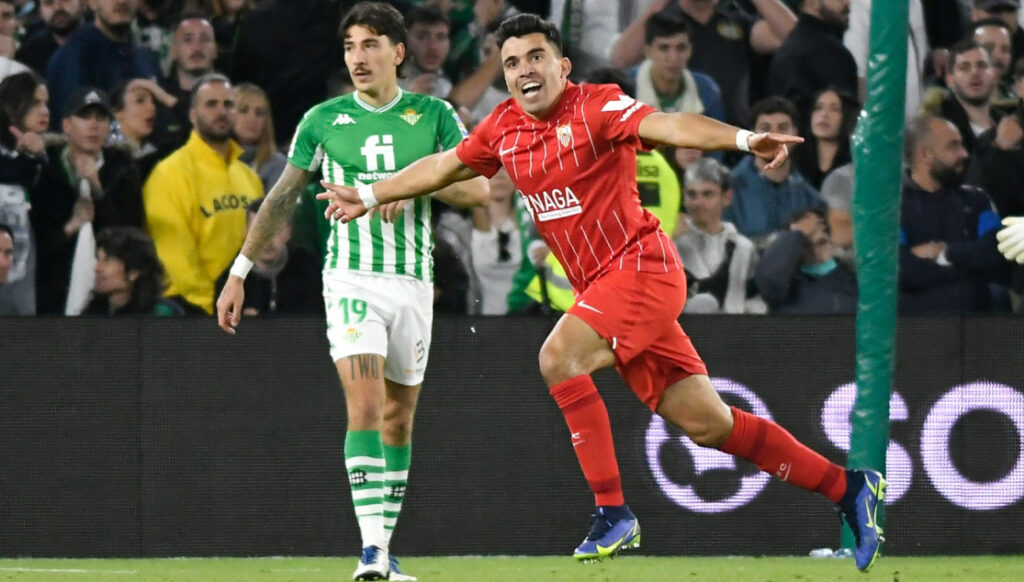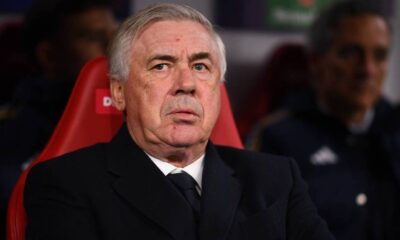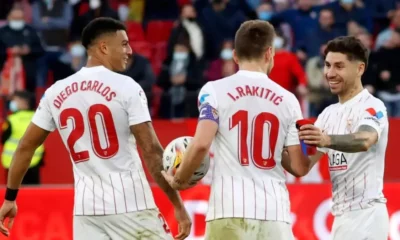Football
Sevilla and Real Betis, one of the biggest rivalries in football. “El Gran Derbi” is one of the most atmospheric matches in the world
Although it may not be as widespread among Czech fans, it is hard to find bigger rivalries and hatreds in the football world. “El Gran Derbi” between Sevilla and Real Betis has extreme intensity and every fan should experience its atmosphere sometime.

Although it may not be as widespread among Czech fans, it is hard to find bigger rivalries and hatreds in the football world. “El Gran Derbi” between Sevilla and Real Betis has extreme intensity and every fan should experience its atmosphere sometime.
When you say rivalry in Spain, most people think of Real Madrid versus Barcelona or Atlético Madrid. Little is known, but you’ll probably find more rivalry and hatred in the south in Andalusia, where Sevilla FC and Real Betis Balompié are based in Seville.
The hatred is even so great that Verdiblancos fans demand the literal name Real Betis, not Betis Sevilla as the club is sometimes misnamed. It is the name Sevilla that evokes the club from the red part of town.
Sevilla play their matches at the Ramón Sanchéz Pizjuán and are based in the Nervión district, one of the more affluent in Seville. Betis plays at Benito Villamarín and is based in the Heliopolis district, which in turn is one of the poorer ones and the club is supported by the working class.
Anyway, the atmosphere in both stadiums is one of the best in Spain. It can only be matched by Bilbao’s San Mamés and Atlético Madrid’s Wanda Metropolitano. Especially in the derby, the stadiums are a living hell.
Losing to a relegated rival
To get a good understanding of how much hatred for the other team means to both Sevilla and Betis, the following story will explain it best. For at the end of the last century we witnessed something unrepeatable. In the last game of the 1996/97 season, Sporting Gijón came to Benito Villamarín. If they beat Real Betis at home, it would mean Sevilla’s relegation to the second division.
And the Béticos seized this opportunity without hesitation. The Gijón players were greeted with a big applause and were supported by Betis fans throughout the match. The Verdiblancos went even further, even whistling at their own players as they approached the Gijon whitewash. In the 56th minute, Cherishev sent Sporting into the lead and the entire Betis stadium erupted in ecstasy.
The match ended with a 0-1 scoreline, and the Gijón players even enjoyed a celebratory round with the Betis fans who were celebrating the relegation of the hated Sevilla. They would rather see their team lose than see Sevilla save themselves.
But karma does exist and it didn’t last long. Three years later, Sevilla found themselves in a similar situation. They were already assured of relegation and had nothing to gain in the last round. But Oviedo were coming to the Ramón Sanchéz Pizjuán and a win would have sent Betis down a place in the competition.
And the payoff was sweet. Sevilla absolutely blew the game, the players didn’t attack at all and Oviedo quickly went 3-0 up. The Rojiblancos, following the example of their rivals, applauded Oviedo and in turn booed any attacking efforts from their own players. At the end of the game, which could have easily ended 0: 15, Sevilla, rather out of honour, rallied a little and reduced the score to 2: 3.
Taking Betis down a level, Sevilla goalkeeper Olsen later admitted that Sevilla had lost on purpose to damage Betis.
Who is more successful?
Historically, Sevilla FC is more successful. In total, “El Gran Derbi” has been played 193 times, Sevilla have 92 wins, Betis 58. There have also been 43 draws.
The player with the most starts in the Derby is Joaquín Sánchez. The 40-year-old still active Betis icon has made 25 starts, with Betis’ José Ramón Esnaola in second place with 24 starts.
Sevilla is also more successful in terms of trophies. It has won the Spanish League once, the Spanish Cup five times, the Spanish Super Cup once, the Europa League five times and the European Super Cup once. He has also won 17 trophies in the Andalusian Cup, which is of little importance.
Betis has collected one Spanish League title, two Spanish Cup titles and one Andalusian Cup title.
Players at both clubs
Although in the last century you would have found a few defectors, in this century there have only been two daredevils. This too proves the immense hatred between the two clubs. Juan Luis Redondo played 90 games for Betis before becoming surplus to requirements for the Verdiblancos in the 1998/99 season. In 2002, after several good engagements, he returned to Sevilla, but this time to the Nervión district. He played 3 seasons for the Rojiblancos.
The second defector was José Mari. The Spanish striker was a Sevilla offspring and made it all the way to the A-team, where he made his debut in 1997. He scored seven times in 21 games and transferred to Atlético Madrid. After that, he played for AC Milan, Villarreal and in 2007 he moved to Betis. He finished his career at Xerez CD, where he played against another defector, Juan Luis Redondo.
Atmosphere in the stadiums
Whether the derby takes place at the Benito Villamarín or the Ramón Sanchéz Pizjuán, there is a huge inferno on the pitch.
The fans of both teams can create an unforgettable atmosphere even at the pre-match training session.
Source: Twitter, Sevilla FC, Real Betis












